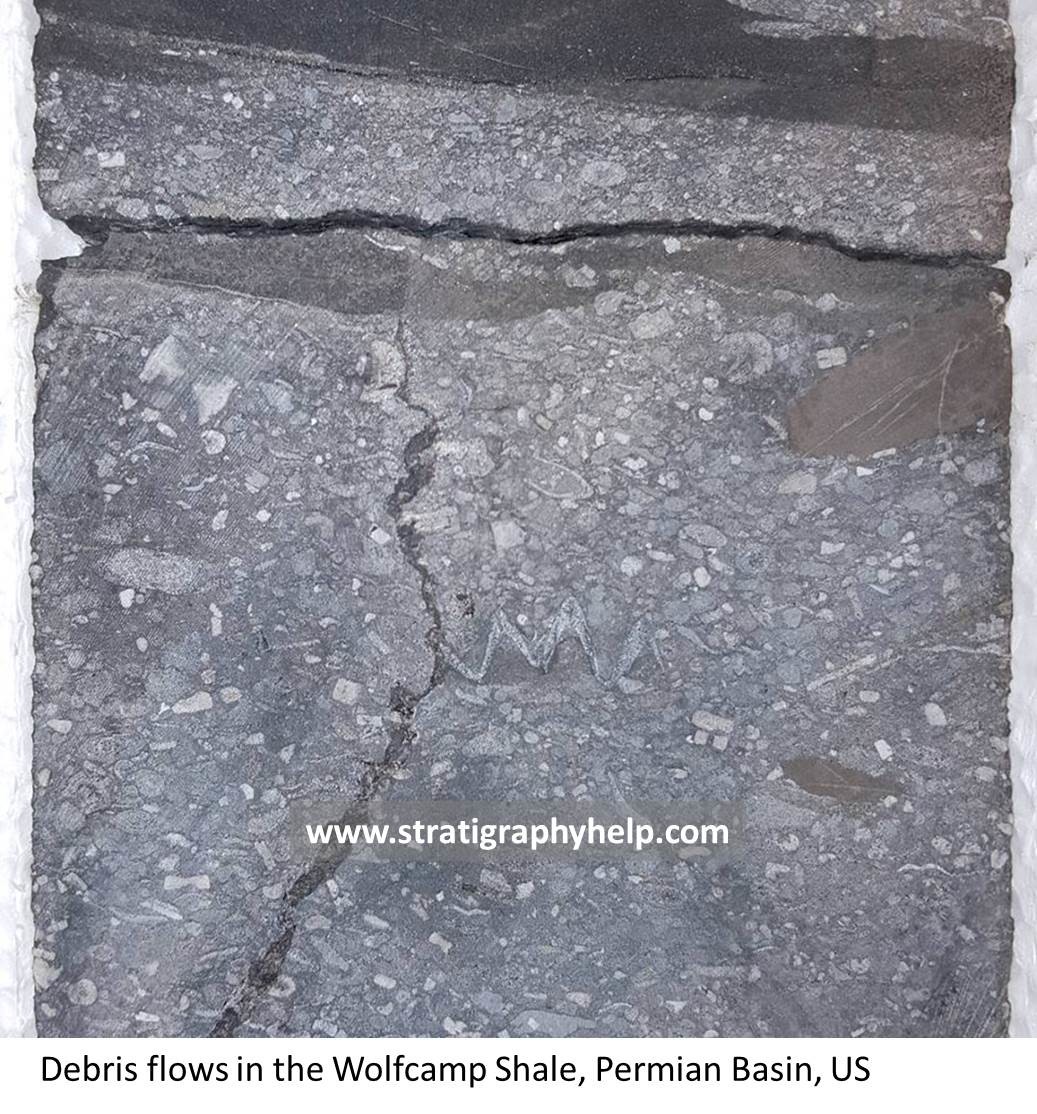Sequence Stratigraphy of Unconventional Resource Plays
2. Unconventional Resource Plays are homogeneous
A quick look at core or thin-sections from any unconventional resource play is a wake-up call in diversity of processes. Cm-scale turbidites of phosphatic grains occur in the Barnett Shale, whereas debris flows several meters thick occur in the Bone Springs of the Permian Basin. Since fracturing is largely a function of rheology these heterogeneities make a difference. Many (Naccio et al., 2005) have demonstrated a strong relationship between small-scale mechanical stratigraphy and depositional environments (some facies associations are more fracture-prone than others).
3. “Special” expensive techniques need to be used to perform sequence analysis in unconventional resource plays
Based on ten years of working several onshore unconventional resource plays we would argue that nothing super-expensive or “out-of-routine” needs to be done to perform sequence analysis. Key-sequence stratigraphic surfaces may be subtle but are easily picked-out in most cores. Elemental analysis logs and XRD which companies have used for decades can be used to pick out changes in mineralogy. Borehole image logs that are run routinely to detect fractures can also be used for to identify ravinement surfaces and coarsening and fining trends. Biostratigraphic data are just as important as in any conventional play.
4. Sequence Stratigraphy is not useful in unconventional resource plays
Most unconventional resource plays are exploited using long horizontal wells – geosteering in the right zone is key. Sequence stratigraphy helps resolve internal architecture such that the drill bit stays within the most organic-rich and fracture-prone zones. We have helped several companies achieve this in the Bakken and Three Forks Formations. Many of the “deep water” shale-plays in the Permian Basin are dominated by sediment gravity flows (SGFs). Depending on relative sea-level stand these can bring in either carbonate-rich or silica-rich material (reciprocal sedimentation). The mineralogy and organic-content of the SGFs and intercalated pelagic units dictate the distribution of sweet spots. Therefore it is imperative to go back to the fundamentals and resolve systems tracts and high-order cyclicity.
With current oil prices and the slow pace of drilling operations, we now have the time to step back and think about the big picture and what sequence stratigraphy can do for us.






Post a comment
You must be logged in to post a comment.